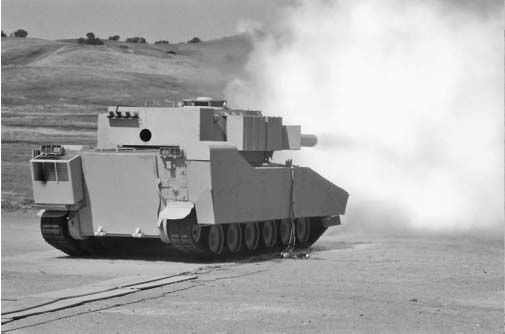


Notice: This is the official website of the All Empires History Community (Reg. 10 Feb 2002)
Gauss and Railgun EMP weaponry |
Post Reply 
|
| Author | |
Catal�n 
Pretorian 
Joined: 03-Jan-2008 Online Status: Offline Posts: 178 |
 Quote Quote  Reply Reply
 Topic: Gauss and Railgun EMP weaponry Topic: Gauss and Railgun EMP weaponryPosted: 03-Jan-2008 at 18:53 |
|
Rail guns and gauss guns use a magnetic field powered through a ridiculous amount of energy (I'm not sure on exact numbers without checking specific sources, but I'm more or less sure that at least only a third of the power inputed into the system is translated as muzzle energy - in a Wikipedia article I wrote a while ago on electrothermal-chemical technology I only say that 50% efficiency hasn't been achieved, but unfortunately I haven't left a specific figure). Both are accelerated through Lorentz' force and according to one paper theoritically a projectile could reach the speed of sound (physically impossible, given that the projectile would have to be massless) - velocities of over 4,500m/s have been achieved in laboratory studies, but projectiles weight is measured in grams (an APFSDS used by current 120mm guns can weigh around 12kg with sabot and long-rod penetrator). Repeatability of the gun is also an issue, and there are size constraints (length). If you and your friend are interested in making a rail gun, you can and you don't need to know much about the physics of the gun - that is, if you want to do it just for fun. There are a myriad of sites on the internet dedicated to describing home made rail gun projects (gauss guns are more difficult to manufacture). The rail gun and the gauss gun has always been considered an option to replace the current solid propellant 120mm gun (nominally, the Rh-120 which is used on the majority of Western tanks [M256 on the M1 Abrams, Leopard 2, Type 90, Ariete, et cetera - the Israeli M251 and M256 are also based on the firing geometry of the Rh-120, as is the F1 of the Leclerc]. However, power requirements currently make such an improvement impossible and there are problems that need to be solved with the technology (repeatibility, for example). In the late 80s NATO explored a 140mm solid propellant gun as an interim until some new technology matured. Generally, this new technology is agreed to be electrothermal-chemical acceleration. Although the speed of development of ETC technology has slowed down considerably since the fall of the Soviet Union (and the demise of the FST-3 tank project), development has continued. Germany has a working ETC gun since 1995, although I don't know how much the technology has matured in Europe. In the U.S., BAE technologies tested the XM291 gun on a M8 chassis and fired twelve ETI rounds (electrothermal-ignition). In the following image, the 'bustle' at the end of the turret is the pulsed power supply - it provides a bit over 100kJ of energy; a rail gun would require dozens of MJ.
|
|
 |
|
Aster Thrax Eupator 
Suspended 
Suspended Joined: 18-Jul-2006 Online Status: Offline Posts: 1929 |
 Quote Quote  Reply Reply
 Posted: 28-Nov-2007 at 20:10 Posted: 28-Nov-2007 at 20:10 |
|
Hey - I've been looking a little into Gauss and Railgun weaponry because of a friend of mine who is interested in and experiments with such technology. Although I kind of get the basis of how it is different from ordinary projectile weaponry, could somebody tell me in basic laymans terms about how it works and how it is better or worse than ordinary weaponry. ...Also, I've heard that a version of the railgun is in development and research for possible outfitting on a battle tank - are these weapons viable for modern combat?
|
|
 |
|
Post Reply 
|
| Forum Jump | Forum Permissions  You cannot post new topics in this forum You cannot reply to topics in this forum You cannot delete your posts in this forum You cannot edit your posts in this forum You cannot create polls in this forum You cannot vote in polls in this forum |
Copyright ©2001-2009 Web Wiz
This page was generated in 0.078 seconds.












 Printable Version
Printable Version Google
Google Delicious
Delicious Digg
Digg StumbleUpon
StumbleUpon Windows Live
Windows Live Yahoo Bookmarks
Yahoo Bookmarks reddit
reddit Facebook
Facebook MySpace
MySpace Newsvine
Newsvine Furl
Furl Topic Options
Topic Options